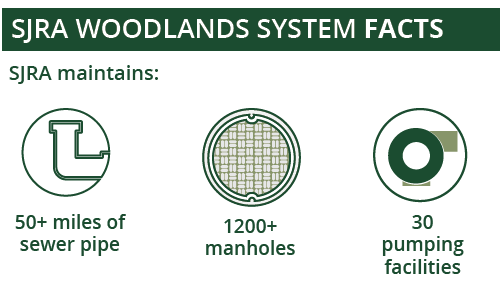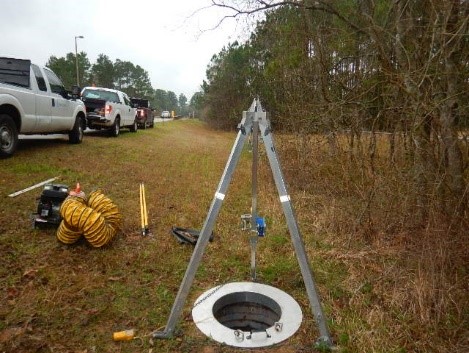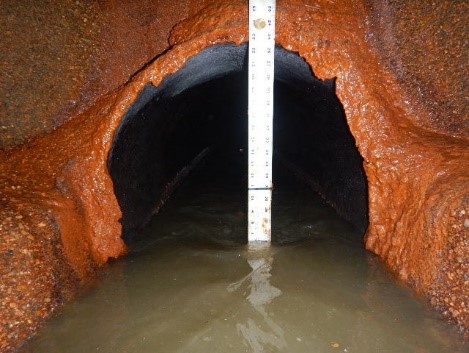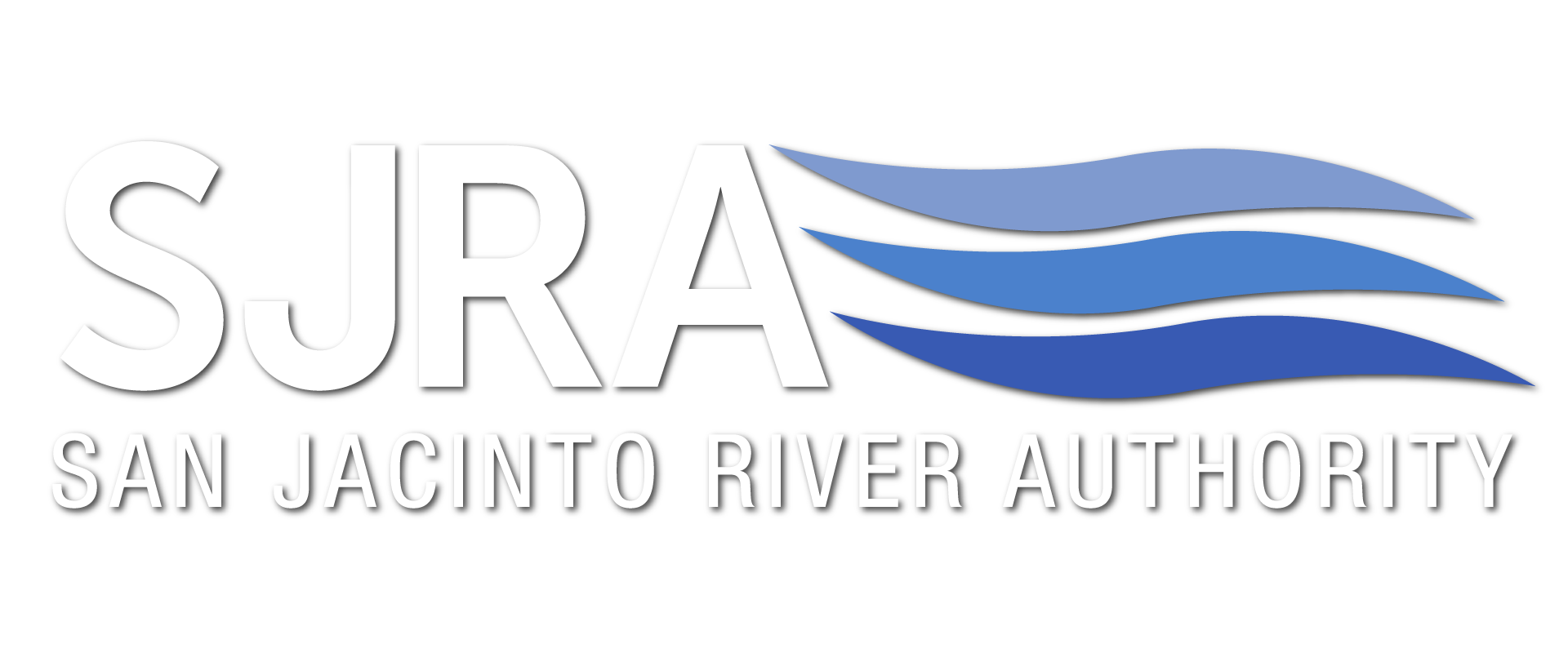By: Chris Meeks, Woodlands Division Manager.
Much like getting an oil change in your vehicle or going in for an annual wellness exam, the pipes underground that move wastewater from homes and businesses in The Woodlands to the treatment facilities must also undergo routine inspection and assessment. Every part of the wastewater system has an expected service life. This is no different than the roof of a house or a water heater. With proper maintenance these items will last for quite a while, but not forever.
Inspections and assessments of the system assist the San Jacinto River Authority (SJRA) in determining the condition of the pipes and when rehabilitation is needed. Currently underway is the Sanitary Sewer Transmission Assessment and Renewal Program, aka SSTAR Program. This program is an in-depth assessment of SJRA’s aging wastewater system in The Woodlands.
The SSTAR Program has two main components. The first is to determine the source of Inflow and Infiltration (I&I). Simply speaking, I&I is leaky pipes, manholes, and structures that allow rainwater and groundwater into the network of pipes, which overloads the wastewater system, increases costs at the treatment facilities, and hastens further degradation of the system. The SSTAR Program will use flow monitors installed in pipes and rainfall monitoring to quantify infiltration in the system, prioritize areas for further inspection and rehabilitation, and ultimately repair those areas to improve the wastewater system.

With the assistance of the MUDs, SJRA and its consultant have identified 63 locations to monitor flows in the wastewater system, as well as eight rain gauge sites to collect data during rainfall events. These will determine which areas are in the greatest need of rehabilitation based on elevated levels of inflow and infiltration. Data will be continuously collected for up to nine months during dry weather and rainfall events. During this time field crews may open manholes to measure flow depth, pipe size, and conduct routine maintenance on the equipment.
The second main component of the SSTAR Program is a physical condition assessment of the wastewater system. Where the first part of the program is measuring the flow through the pipes, this part of the program is to ensure the pipes themselves are physically capable of carrying the flow. This assessment involves SJRA employees and consultants physically viewing the main parts of the wastewater system and selectively conducting in-depth assessments to better determine a rehabilitation or replacement date for parts of the wastewater system. Similar to the flow monitoring, field crews may open manholes, enter some manholes, and at selected sites, clean and televise pipes. This type of work is done almost daily and has minimal impact to residents, business and traffic.

In all, this program is expected to be completed in Summer 2020. At the end of the program, the information gathered will assist SJRA in determining and prioritizing rehabilitation work that needs to be conducted in the wastewater system for the next 10 years.
So what does this mean for YOU?
Since the SSTAR Program will identify the areas where rainwater and groundwater are coming into the pipe, and where it should not be, it will eventually translate into a positive impact to your bank account. The Program will ultimately stop overloading the system and therefore save money. Saving money is always a positive thing.
For additional information on the SSTAR Program or the Woodlands Division, please visit our website at www.sjra.net or call 281-367-9511.
Featured in the March, 2019 Issue of Dock Line Magazine.





